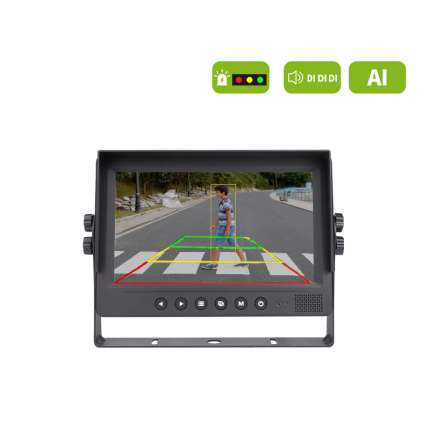The evolution of vehicle safety technology has highlighted a critical distinction: normal cameras capture visuals, while AI cameras interpret and act on them. Traditional cameras rely on passive image recording, limited by environmental factors like lighting or motion blur. In contrast, AI wireless vehicle cameras integrate machine learning algorithms to analyze scenes in real time, enabling object recognition, hazard prediction, and automated alerts. For industries demanding precision—such as logistics, agriculture, or emergency services—this shift from observation to intelligence is transformative.
Core Functionality: Recording vs. Interpreting
Normal cameras, including many wireless vehicle cameras, transmit live footage but lack contextual awareness. For example, a standard wireless system might display an obstacle behind a truck but cannot classify it as a pedestrian or another vehicle. An AI detection camera, however, uses computer vision to tag objects, measure distances, and assess collision risks. Luview’ s R151/R159 AI Detection Systems exemplify this by combining 77GHz millimeter-wave radar with AI algorithms, achieving 99% accuracy in detecting moving objects up to 50 meters away—a feat impossible for conventional cameras.
Compliance and Customization
Regulatory standards like EU BSIS (Blind Spot Information System) and MOIS (Moving Object Detection) demand rigorous performance from vehicle safety systems. Normal cameras rarely meet these benchmarks without AI augmentation. Luview addresses this by embedding AI detection capabilities into compliant hardware. Their JY-PT10 Blind Spot Radar System, featuring 77GHz sensors and AI analysis, not only meets EMARK and DOT certifications but also offers customizable alert thresholds for different vehicle types. Such flexibility is invaluable for manufacturers tailoring systems to niche markets.
Conclusion
The divide between normal and AI cameras lies in their ability to transform data into actionable insights. While wireless vehicle cameras provide essential connectivity, AI detection cameras elevate safety through intelligent analysis. Luview‘ s portfolio—spanning night vision systems, compliant radar solutions, and RV-specific rearview technologies—demonstrates how AI integration addresses real-world challenges. For clients prioritizing precision, durability, and regulatory adherence, investing in AI-driven systems is no longer optional but a strategic imperative.



